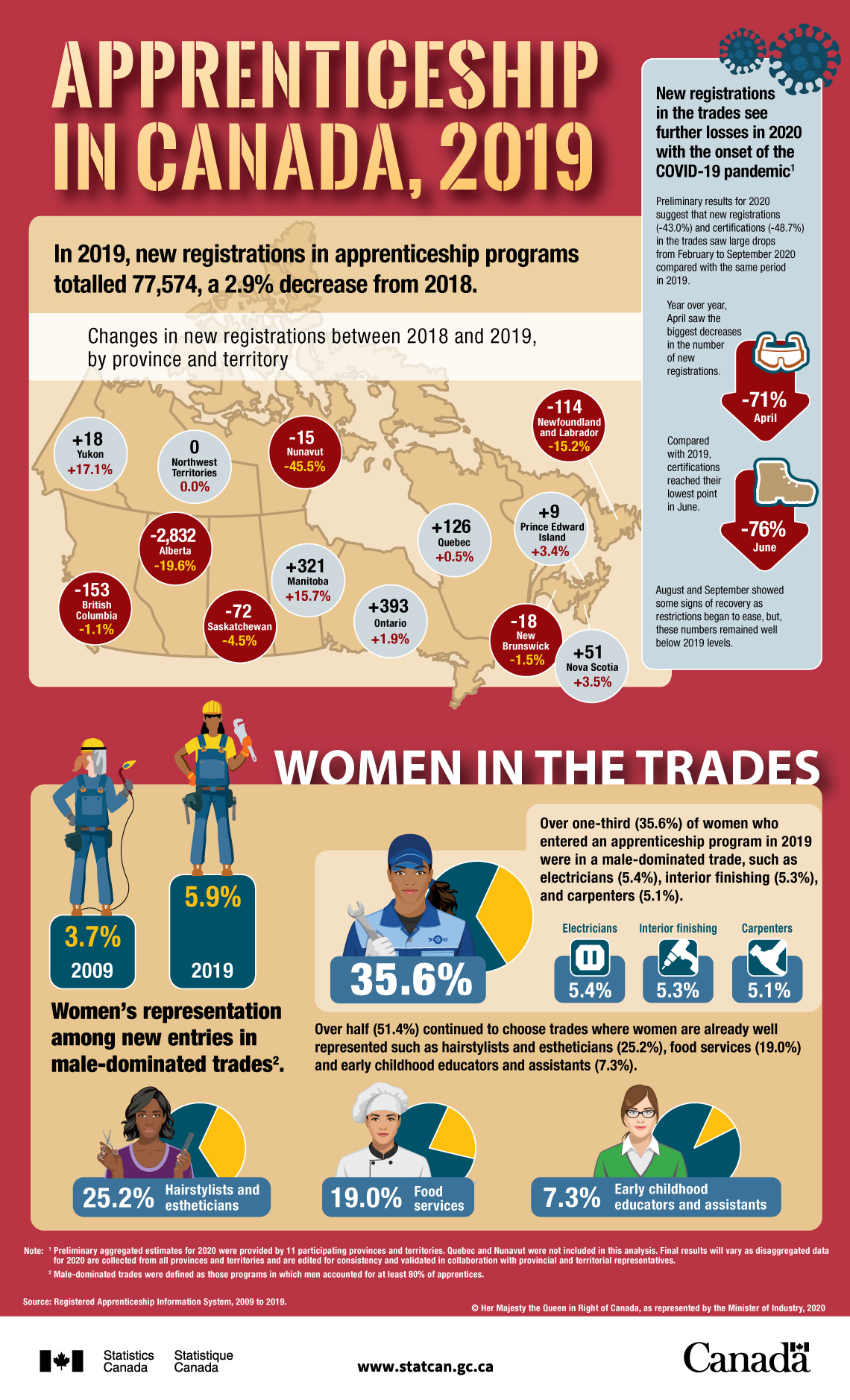Apprenticeship in Canada, 2019
Archived Content
Information identified as archived is provided for reference, research or recordkeeping purposes. It is not subject to the Government of Canada Web Standards and has not been altered or updated since it was archived. Please "contact us" to request a format other than those available.

Description: Apprenticeship in Canada, 2019
Apprenticeship in Canada, 2019
In 2019, new registrations in apprenticeship programs totalled 77,574, a 2.9% decrease from 2018.
| Changes | ||
|---|---|---|
| number | percent | |
| Newfoundland and Labrador | -114 | -15.2 |
| Prince Edward Island | +9 | +3.4 |
| Nova Scotia | +51 | +3.5 |
| New Brunswick | -18 | -1.5 |
| Quebec | +126 | +0.5 |
| Ontario | +393 | +1.9 |
| Manitoba | +321 | +15.7 |
| Saskatchewan | -72 | -4.5 |
| Alberta | -2,832 | -19.6 |
| British Columbia | -153 | -1.1 |
| Yukon | +18 | +17.1 |
| Northwest Territories | 0 | 0.0 |
| Nunavut | -15 | -45.5 |
New registrations in the trades see further losses in 2020 with the onset of the COVID-19 pandemicNote 1
Preliminary results for 2020 suggest that new registrations (-43.0%) and certifications (-48.7%) in the trades saw large drops from February to September 2020 compared with the same period in 2019. Year over year, April saw the biggest decreases in the number of new registrations (-71.2%). Compared with 2019, certifications reached their lowest point in June (-76.4%). August and September showed some signs of recovery as restrictions began to ease, but, these numbers remained well below 2019 levels.
Women in the trades
From 2009 to 2019, women’s representation among new entries in male-dominated trades increased from 3.7% to 5.9%.Note 2
Over one-third (35.6%) of women who entered an apprenticeship program in 2019 were in a male-dominated trade, such as electricians (5.4%), interior finishing (5.3%) and carpenters (5.1%). Over half (51.4%) continued to choose trades where women are already well represented such as hairstylists and estheticians (25.2%), food services (19.0%) and early childhood educators and assistants (7.3%).
Source: Registered Apprenticeship Information System, 2009 to 2019.
- Date modified:
